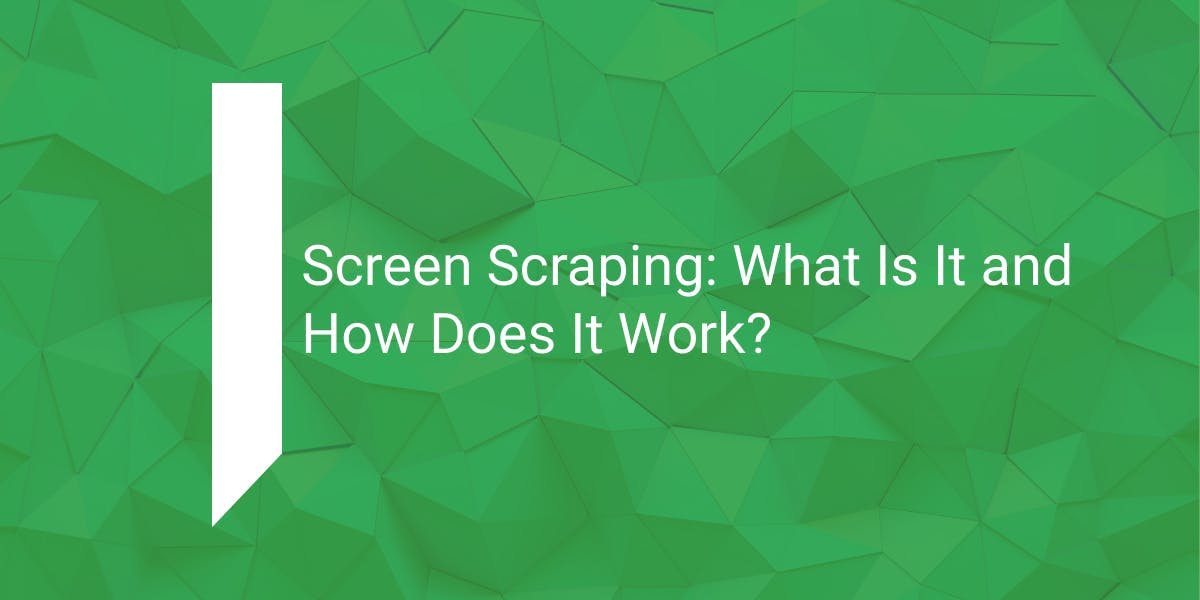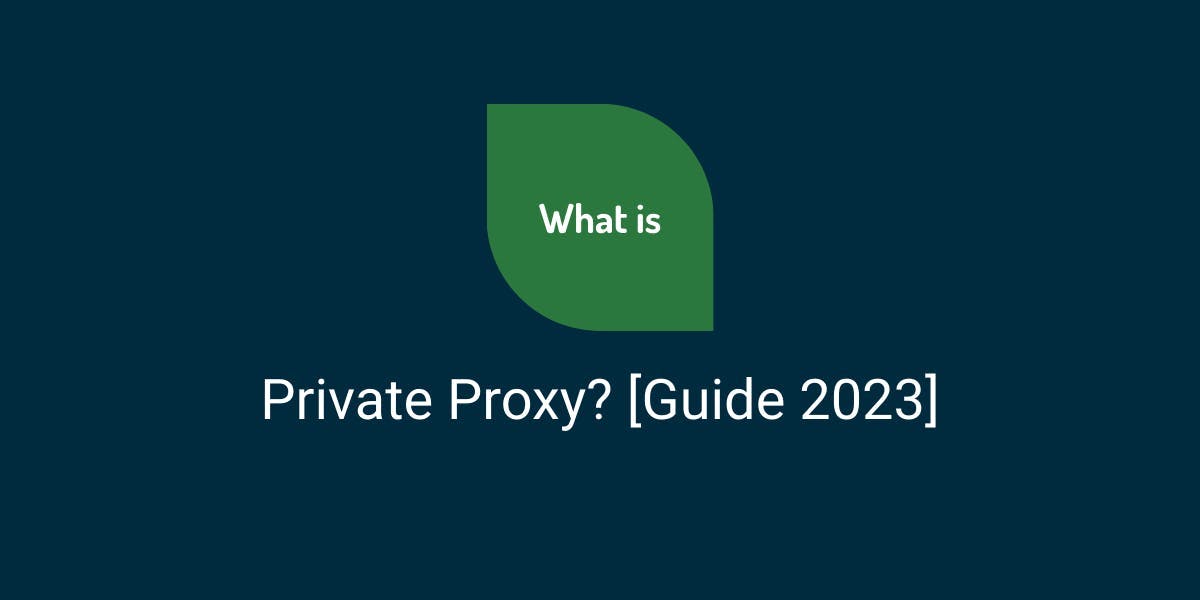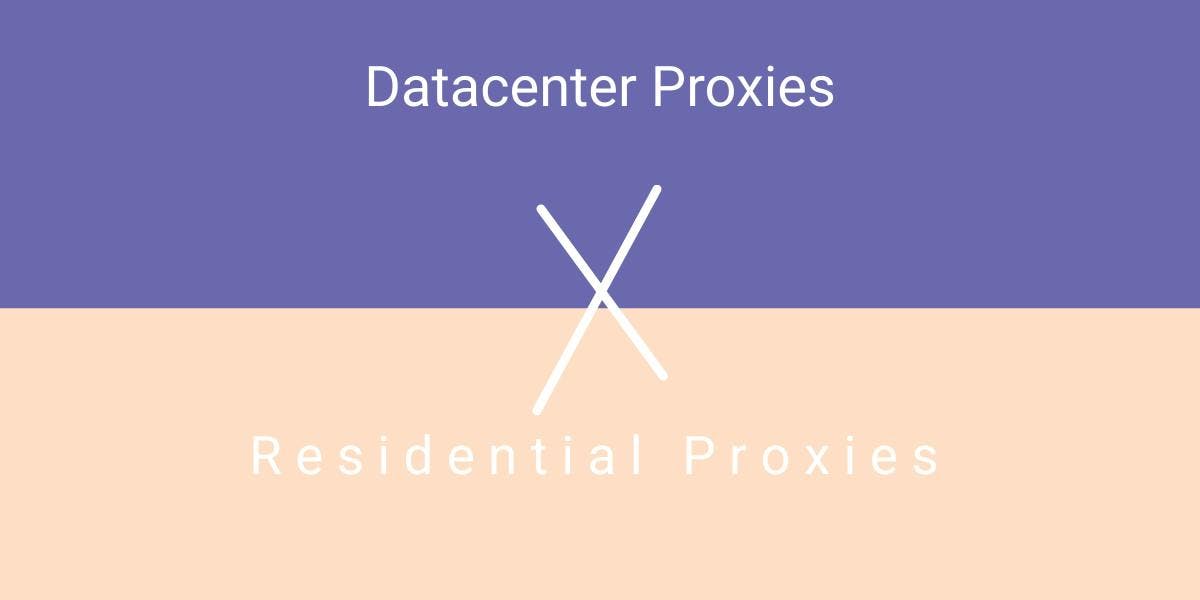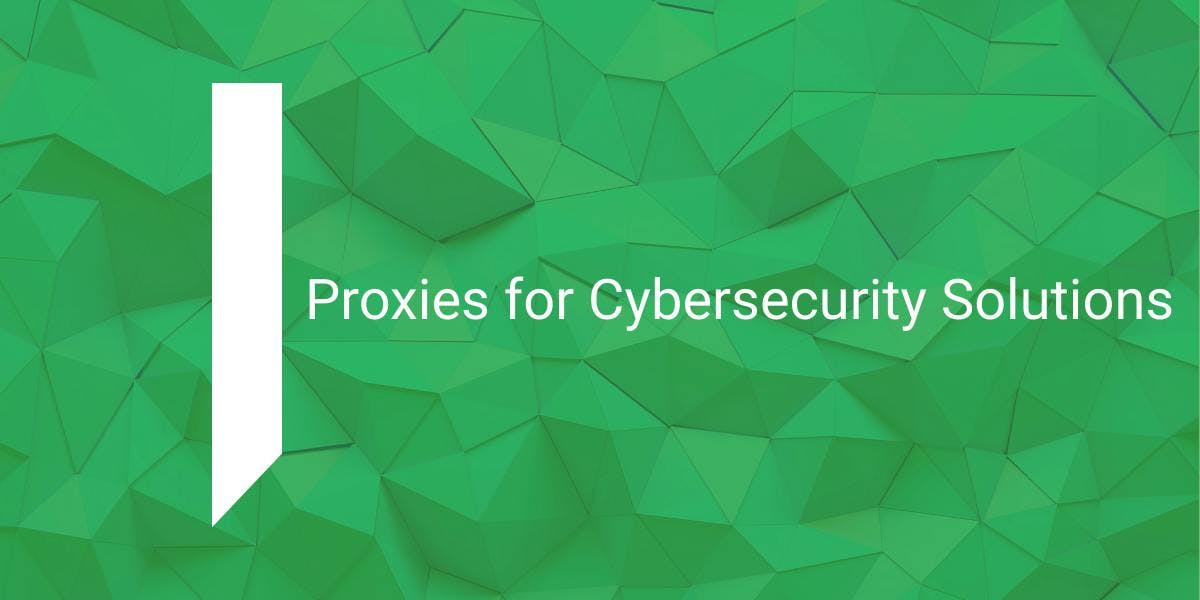Screen Scraping: What Is It and How Does It Work?
Flipnode on Apr 21 2023

Given that online data acquisition is driving business growth, it is understandable that there is a desire to collect as much data as possible. One option for gathering various forms of data is through screen scraping, which is particularly useful for retrieving information from sources that other types of scrapers cannot access.
This article will explore screen scraping in detail, including its security implications. We will also examine its various applications and compare it to web scraping to highlight their key differences.
Screen scraping explained
Screen scraping is a technique used to extract data displayed on a screen from one application and transfer it to another. This method involves capturing visual data from a user interface that may include text, pictures, graphs, or charts and converting it into plain text.
By automating the data collection process, screen scraping eliminates the need for manual extraction, making the process faster and enhancing the overall user experience.
Typically, screen scrapers are designed to identify and extract data from user interface elements, and may utilize optical character recognition (OCR) technology to extract information from images. The extracted data is then transformed and delivered to the intended application.
Is screen scraping secure?
It is important to note that screen scraping is a legal method of data collection and will not result in legal repercussions. However, since screen scrapers gather visual data from a screen, they may pose a security risk if used to access confidential information. This risk is not inherent to the screen scraping process, but rather depends on the measures taken by companies to secure their data.
For instance, there are concerns regarding screen scraping in the banking sector and its potential security risks. Third-party providers (TPPs) often use screen scraping to collect and display transaction information from a user's multiple bank accounts in a single application. These TPPs require users to provide their account login credentials, which they use to log into the user's bank accounts and scrape the visual data from the bank's website.
If TPPs do not adequately secure or manage the collected data, it can pose a significant security risk to customers. Furthermore, customers may not be able to identify fraudulent banking applications and may unknowingly provide sensitive information to fraudsters.
With the introduction of regulations like PSD2 and Open Banking, TPPs are gradually phasing out screen scraping, and banks are required to integrate APIs into their processes. This is due to the lack of security standards and transparency regarding the data shared by customers with third parties using screen scrapers. Thus, screen scrapers should not be blamed for the negligence of the banking industry in securing customer data.
While screen scraping in itself is not inherently insecure, it can be used for fraudulent activities. Fraudsters can use screen scrapers to extract information from websites and create deceptive content for malicious intent. Overall, companies must implement adequate security measures to protect their data, and regulations must be enforced to ensure data protection.
Use cases of screen scraping
Using a scraping tool can be beneficial for various reasons. One such reason is when it is necessary to extract data from Legacy systems that do not work with modern solutions like APIs. Screen scraping is often used for different purposes, including:
Market Research
Gathering and researching competitors’ market data is vital for any business to succeed. Screen scraping accelerates the research process by collecting data in bulk, converting it, and then transferring the information to another application. This enables companies to conduct market research and adjust their business strategy accordingly to remain competitive.
Price Monitoring
Product prices change frequently throughout the day, so online sellers need to keep their prices competitive to stay ahead. Screen scrapers can provide market data that helps businesses decide on the best price points for the products they sell.
Review Monitoring
Brand reputation can significantly impact success. Investing in review monitoring is a wise decision since search engines consider reputation when ranking websites, and businesses can benefit from addressing any issues highlighted by negative reviews. Screen scrapers can collect reviews on a large scale and help improve the ratings of businesses.
Ad Verification
Companies spend a considerable amount of money on creating and displaying ads. However, it is important to ensure that these ads are visible to the intended audience and are not being used for fraudulent purposes. With screen scraping, businesses can verify the use, placement, and audience of their ads on a large scale and at a high speed.
Brand Protection
Ideas, products, and content can be easily stolen or appropriated. Screen scraping tools can scan the web on a large scale and help identify these infringers.
What is the difference between web scraping and screen scraping?
In summary, the two practices have differences in the data they can extract. Web scraping tools can scrape websites for data such as URLs, text, images, and videos. On the other hand, screen scraping tools can extract screen input from websites, applications, and documents, including text, images, charts, and graphs.
One significant contrast is that web scraping can go beyond the graphical user interface and retrieve data from HTML, while screen scraping is solely focused on the data displayed in the user interface. It can extract visual data from HTML only when combined with software like Selenium, which can read HTML code.
Furthermore, web scraping can gather both public and non-public data, while screen scraping is unconcerned with how data is accessed and only deals with the information displayed on the screen.
Conclusion
In the world of technology, data scraping has become an important process for fueling business growth. While there are not many scraping techniques available, screen scraping can be a valuable option for collecting screen display data accessible on websites, applications, or documents.
When used in conjunction with proper security measures, screen scraping is a secure tool. It's important to note the difference between web scraping and screen scraping, as both techniques can extract different types of data. However, businesses can use both screen scraping and web scraping simultaneously to maximize data extraction and enhance their operations.



